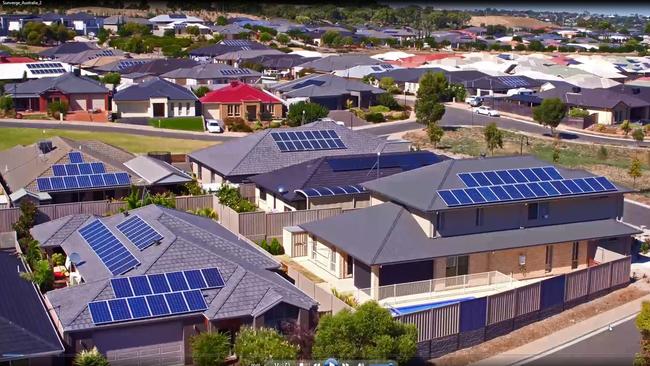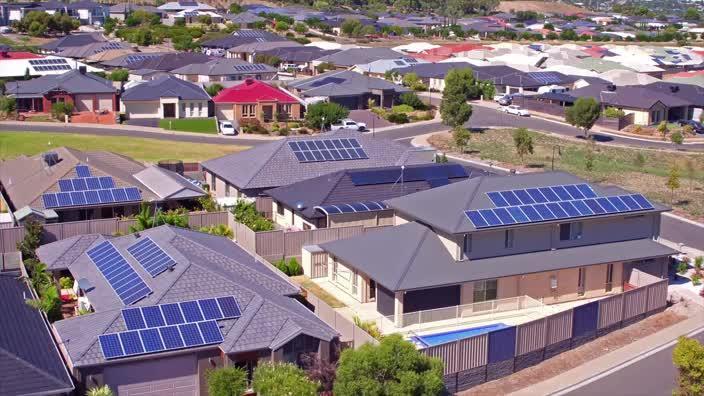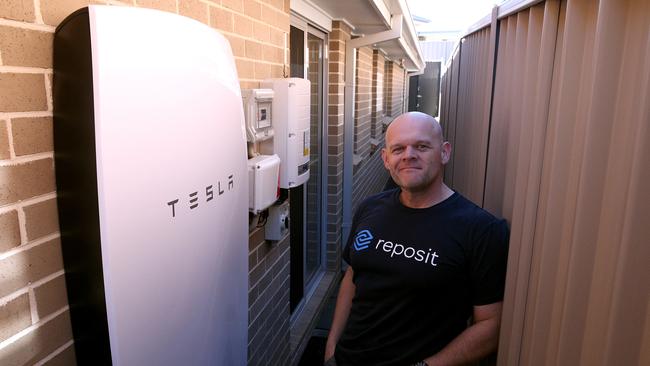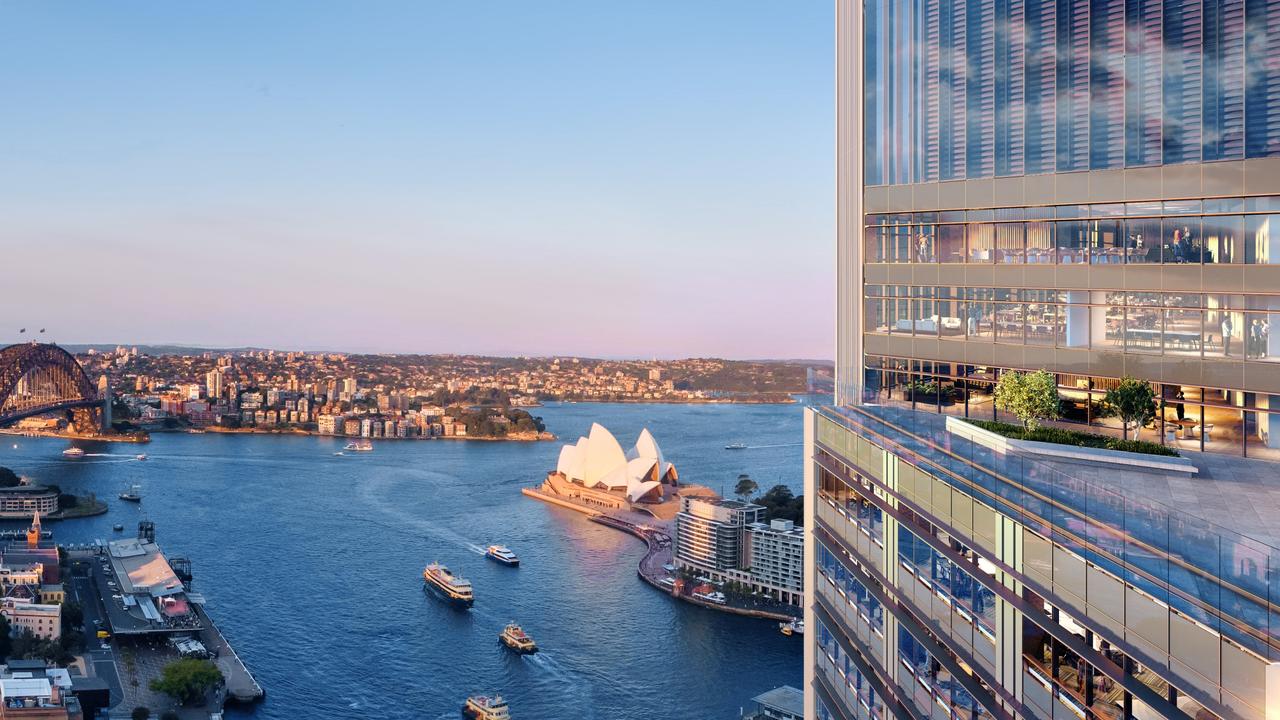Role of batteries provides aspirational charge to energy debate
AGL’s first battery-inspired virtual power plant has gone live with more battery solutions to follow.

Call it battery fetishism if you must, but batteries are going to play an even bigger role in power sources being tested in Australia. Take for example the virtual power plant concept which has gone live in South Australia.
A VPP comprises hundreds, maybe thousands, of homes each with solar panels where excess energy is stored in batteries. Instead of operating as separate entities, energy stored in those batteries is made available in unison to the grid at times of peak load or an outage.
An outside body such as an energy retailer co-ordinates the flow of battery power back to the grid. For the rest of the time, consumers self-manage their stored solar power.
CSIRO has been developing the software for this, and although it is not directly part of South Australia’s new energy plan, the VPP concept is being implemented in South Australia separately by AGL Energy, Evergen and SA Power Network. And it’s happening right now.
Today AGL Energy announced the ‘go live’ of what it says will be the world’s largest residential VPP. “Batteries installed in homes throughout Adelaide are now orchestrated to simultaneously aggregate the battery discharge via smart software in a cloud-based platform, giving critical mass to the VPP generation capabilities,” AGL says in a statement.
Managing director and chief executive Andy Vesey says the 5MW peaking capacity of the VPP can help with security of supply and help customers to save on their energy bill.
The Australian this week analysed the bill of Sydney’s Nick Pfitzner, his wife and two children after installing a Tesla Powerwall system. Rather than drawing power from the grid as before, the Pfitzners returned more power to the grid than they took. They effectively supplied 2457kWh to the community over a 12-month period.
It may be a small contribution but if tens of thousands of homes supplied a net energy benefit to the grid, it would reduce shortage problems. That’s what AGL and other companies are banking on.

[ The video is without sound. AGL’s Virtual Power Plant of homes are coordinated to uniformly supply power to the grid on demand. ]
AGL began the scheme in last August with the release of 150 batteries, and announced the availability of another 350 batteries in December with the aim of 1000 homes joining the pilot scheme. AGL is using subsidised Sunverge 11.6kWh batteries costing $3849. Sunverge and the Australian Renewable Energy Agency are partnering AGL in the project.
This VPP of 1000 homes may produce a modest 5 megawatts of power. That’s 1/20th of the 100MW of batteries that Tesla founder Elon Musk said last week he would install to fix South Australia’s energy supply. It is 1/50th of the 250MW gas-fired power plant that Premier Jay Weatherill announced this week to provide back-up power for the state’s system.
But it’s the start of an idea that could grow big over time.
Evergen, meanwhile, is developing its own VPPs using CSIRO’s intelligent management software. It costs about $15,500 for 5.3KW of solar panels and a 9.6kWh battery. Its intelligence ensures a battery is used when power is at its most expensive at peak times.
VPPs also may change how people see the endgame in solar energy. For many the endgame was complete independence from the grid. But the new endgame may be staying on the grid, both as an energy supplier and a consumer.
The South Australian power debate has been a clash between the practical and the visionary. The practical, which had been neglected by the state government, was ensuring there was sufficient back-up generation in its push for more renewable energy. That now has been addressed mainly by the proposed gas-fired power plant and 100MW battery plant.
At least there is a plan in South Australia, albeit one that will place its drive for self-sufficiency in conflict with the operation of the National Electricity Market. Musk, who started the present debate, may or may not get to build his 100MW battery farm in 100 days that was billed as a “fix” in South Australia.

There are a couple of myths about this project. First, 100MW could never be a full fix for a state power supply of about 2900MW on its own. It’s part of a solution. Second, the 100 days means 100 days after preliminary investigations, and after contracts are signed. This could be many months.
Musk will be up against other energy suppliers that want to build a battery park. One is AGL Energy, another is Lloyds Register in partnership with battery provider RES, which proposed the same 100MW battery fix late last year. Lloyds reportedly costed it at $100 million and, like Musk, said it could be built quickly.
There’s plenty of questions. How will South Australia dispose of old batteries given it might eventually have 10,000s of them? Tesla is reported to recycle 70 per cent of carbon in its batteries in the US. How will that work here?
The carbon footprint during manufacture will be an important factor for many, as is how long the battery farm will sustain 100 MW. Power ratings (megawatts) may be fine for describing facilities pumping out power 24/7, but for finite battery storage you need to specify a time frame such as a megawatt hour energy rating.
As for Musk and Australian tech billionaire Mike Cannon-Brookes, who first kicked off a Twitter debate with Musk over South Australia’s energy concerns, they have had an amazing impact on the energy debate in Australia. If nothing more, they have taken it beyond the spectacle of politicians brandishing clumps of coal in parliament to at least an aspirational level.
The debate has focused Prime Minister Malcolm Turnbull on solutions at a federal level, such as his announcement about garnering more renewable energy by extending the Snowy Mountains hydroelectricy scheme.
Provided there is decent backup power generation there shouldn’t be an issue with developing VPPs and new forms of energy storage so that they can be refined and more affordable in time.
[Story amended to include today’s AGL Energy announcement and a reference to the PM’s Snowy initiative.]



To join the conversation, please log in. Don't have an account? Register
Join the conversation, you are commenting as Logout